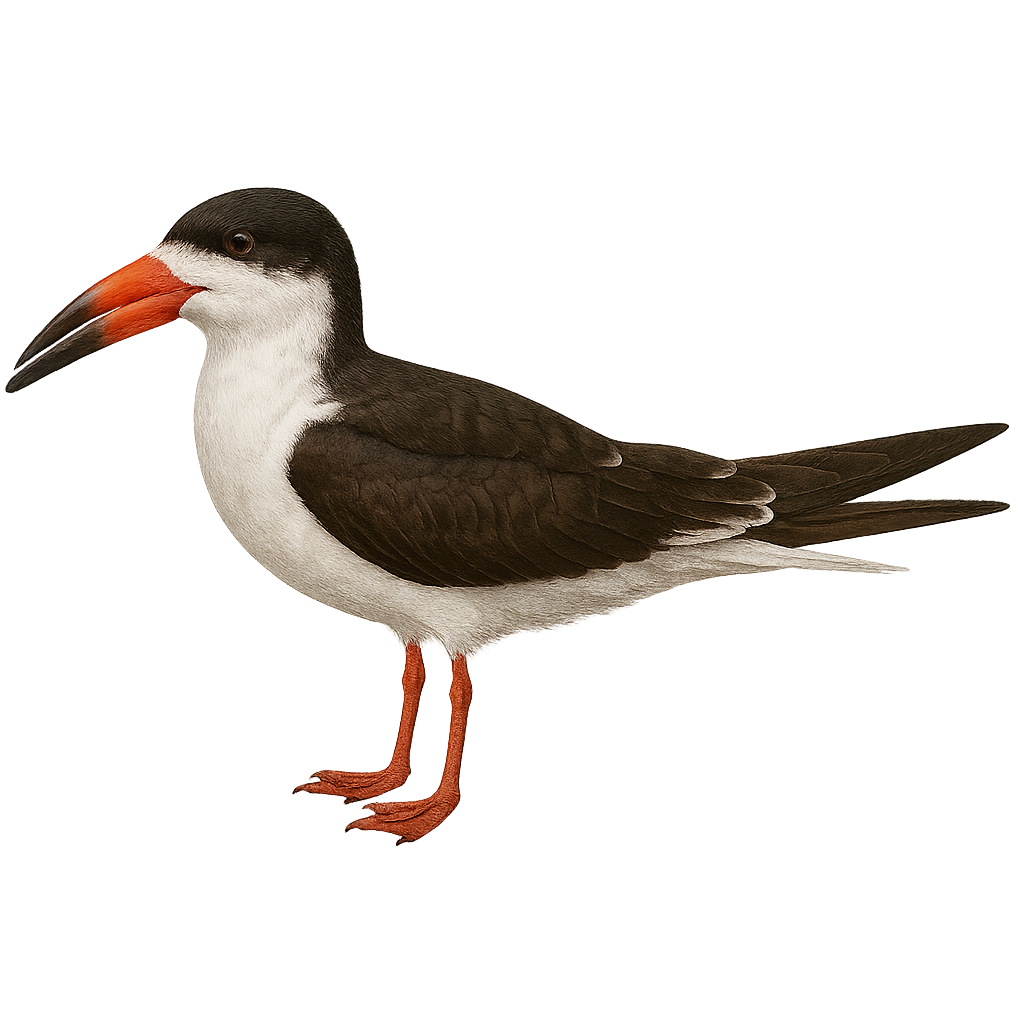Your wildlife photography guide.
Explore the black skimmer in detail, study its behavior, prepare your shots.
Where to observe and photograph the black skimmer in the wild
Learn where and when to spot the black skimmer in the wild, how to identify the species based on distinctive features, and what natural environments it inhabits. The WildlifePhotographer app offers tailored photography tips that reflect the black skimmer’s behavior, helping you capture better wildlife images. Explore the full species profile for key information including description, habitat, active periods, and approach techniques.
Black Skimmer
Scientific name: Rynchops niger

IUCN Status: Least Concern
Family: LARIDAE
Group: Birds
Sensitivity to human approach: Suspicious
Minimum approach distance: 10 m
Courtship display: May to July
Incubation: 21-23 jours
Hatchings: May to August
Habitat:
Sandy beaches, coastal islands, estuaries
Activity period :
Primarily active during the day, with peak activity in the morning and late afternoon.
Identification and description:
The Black Skimmer, or Rynchops niger, is a distinctive waterbird known for its unique scissor-like bill. The lower mandible is longer than the upper, allowing it to skim the water's surface to catch fish. This feeding behavior is fascinating to watch. Adults have black plumage on their back and white on their belly, with long, pointed wings. They nest in colonies on sandy beaches or islands, often alongside other seabirds. Their distinctive call, a nasal bark, is often heard in coastal areas where they reside. These birds are primarily found in the Americas, from the southern United States to Argentina.
Recommended lens:
400mm – adjust based on distance, desired framing (portrait or habitat), and approach conditions.
Photography tips:
To photograph the Black Skimmer, focus on beaches and estuaries where they often gather. Use a 400mm lens or longer to capture detailed images without disturbing them. Observe their unique fishing behavior, flying low over the water. Shoot early in the morning or late afternoon for soft lighting and to avoid harsh shadows. Be patient and discreet to avoid disturbing their natural habitat.
The WildlifePhotographer App is coming soon!
Be the first to explore the best nature spots, track rutting seasons, log your observations, and observe more wildlife.
Already 1 432 wildlife lovers subscribed worldwide

